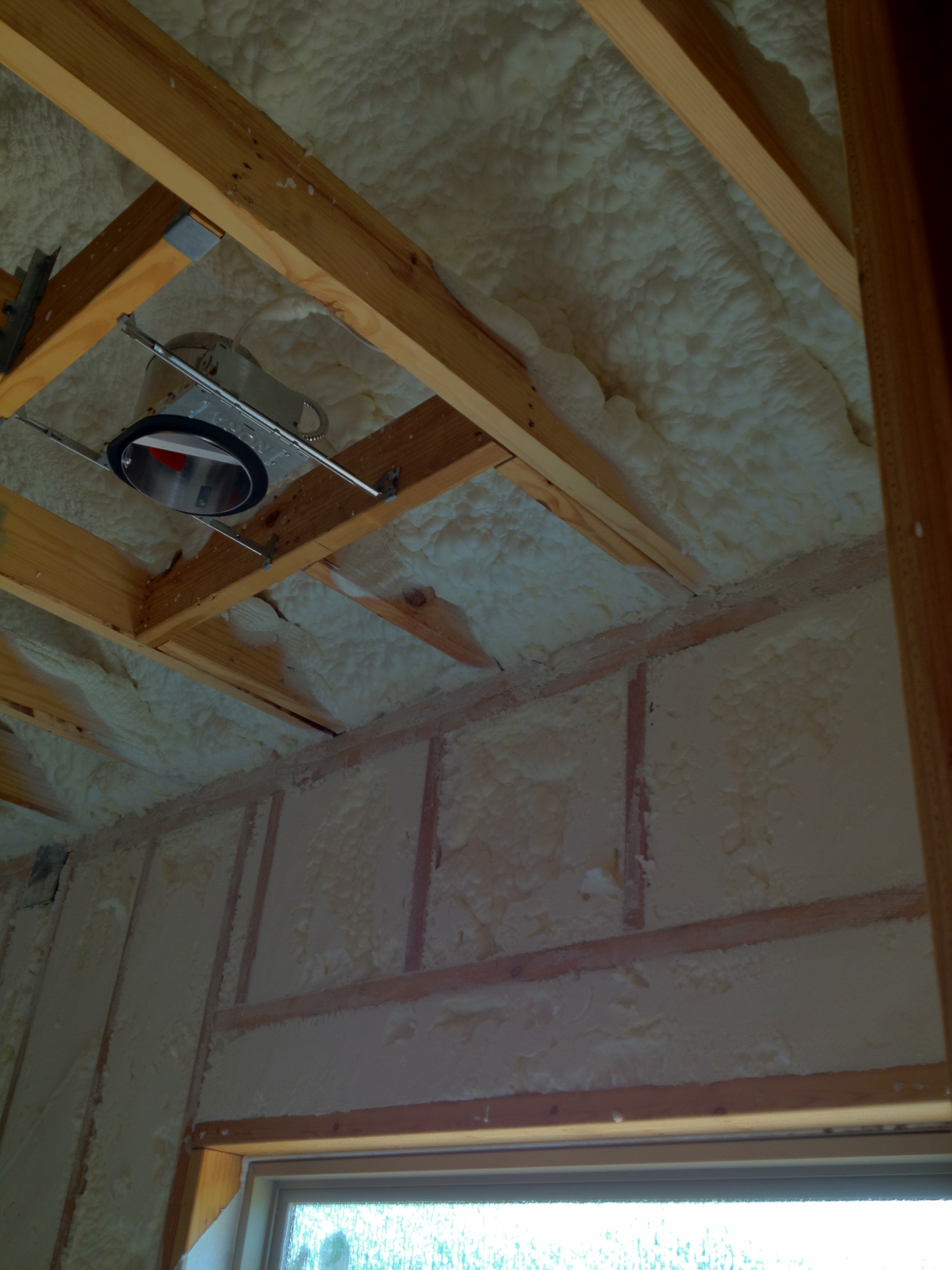How much more does it cost to do spray foam insulation on new construction? I’ve done this comparison many times in the last few years, and the answer comes up different every time. The main factors determining the overall cost are 1) the area of the roofline that would be foamed, and 2) the cubic volume of the area to be heated and cooled.
We are building a home with a roof pitch of 20/12—which means that for every 12″ of horizontal run, the roof has a 20″ vertical rise which is very steep. Foam encapsulation on this home didn’t make sense financially because of the difficulty of spraying the foam and the sheer volume of product needed to do the job. This particular home is also a vacation home—which is factor in determining how much money to spend on energy efficient upgrades. More on that later.
Spray foam encapsulation will reduce the amount of heating and cooling capacity needed for a home (often referred to as “tonnage”). I’m sure we can all agree that 2 heating/cooling systems would be more expensive than 1, that 3 would be more expensive than 2, and so on. If the spray foam encapsulation reduced the required tonnage to the point that only one unit would be required to heat and cool the home vs. two, you can see how the overall cost of the foam insulation package might be reduced.
In general, spray foam insulation will cost more than blown-in-blanket wall insulation with loose-fill attic insulation (R-40 as a standard). The attic roofline is typically insulated with 5″ nominal fill foam resulting in an R value close to 20. But when you consider a possible reduction in heating and cooling equipment costs, the difference may not be all that much.
As an example, we are building a home now that is 3,200 square feet that required 7 tons of heating and cooling capacity with our standard R-13 blown-in-blanket wall insulation and R-40 attic loose-fill insulation. We would’ve chosen the Trane XL16i systems for this application. However, with a spray foam encapsulation insulation package, the tonnage was reduced to 5—which can be achieved with one unit. With the spray foam insulation package, we elected to go with the Trane XR15 system—further reducing costs—because we felt the additional features of the XL16i system were not needed.
Putting it all together on our 3,200 square foot house, the spray foam encapsulation insulation package was only $2,000 more than the blown-in-blanket wall and loose-fill attic insulation—making the spray foam insulation option very hard to pass up considering how quickly that additional investment would be made up in energy savings.
Footnote: Did you notice in the photo that there is insulation above the window where you would typically see a solid wood header? We use “C headers,” an advanced framing technique that supports the load above the window AND provides a cavity for an additional 2″ of insulation above the window – where there would’ve been none with traditional header framing. Wood is a terrible insulator, so the more spray foam, the better!



